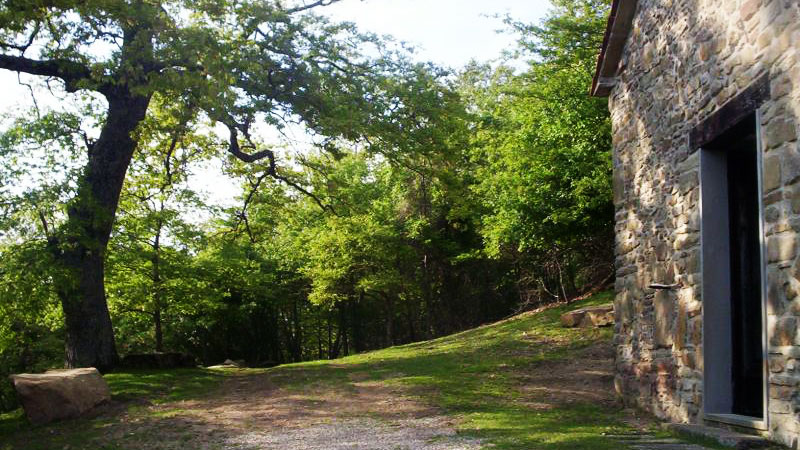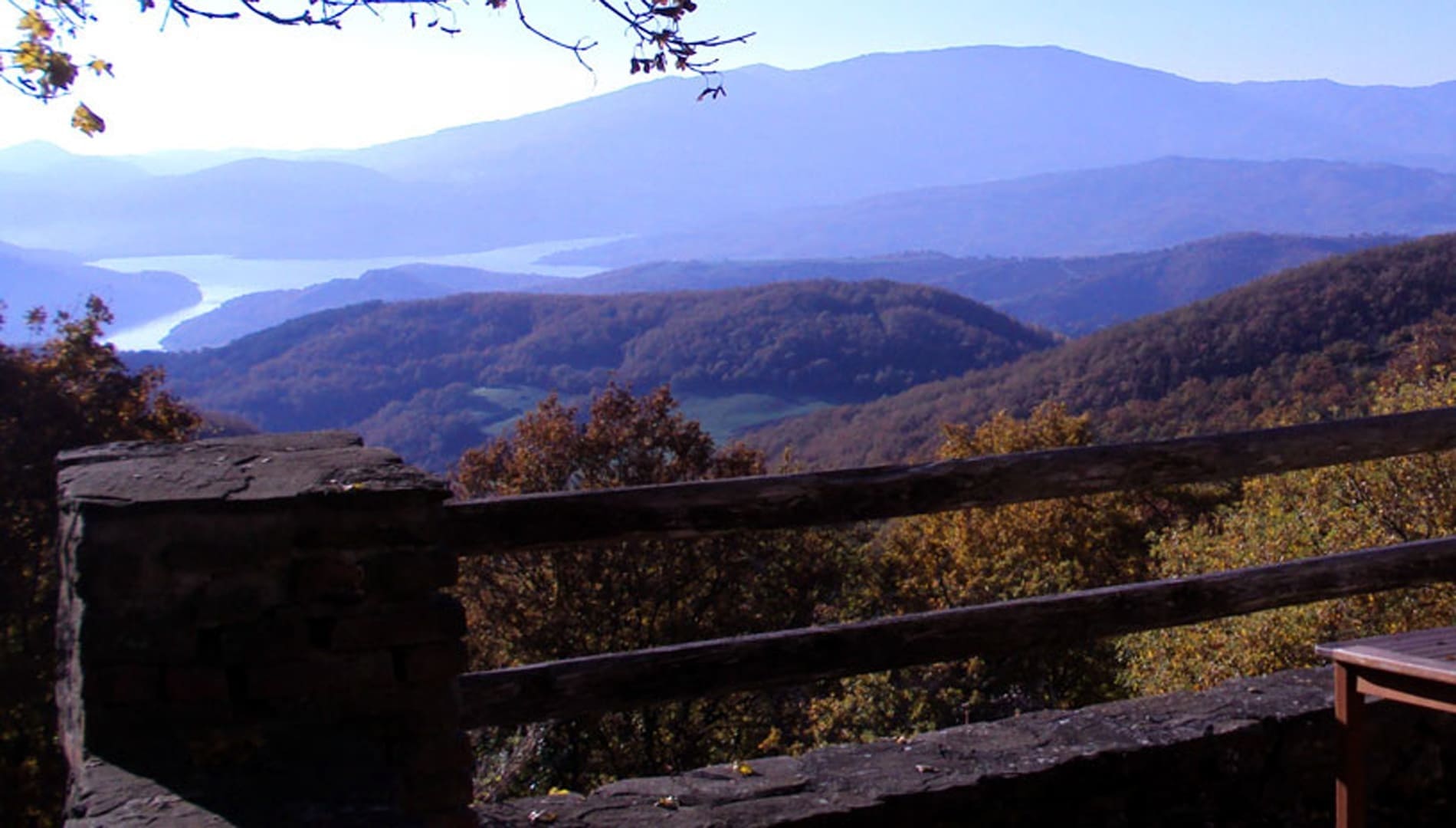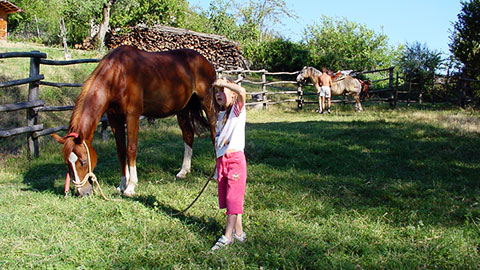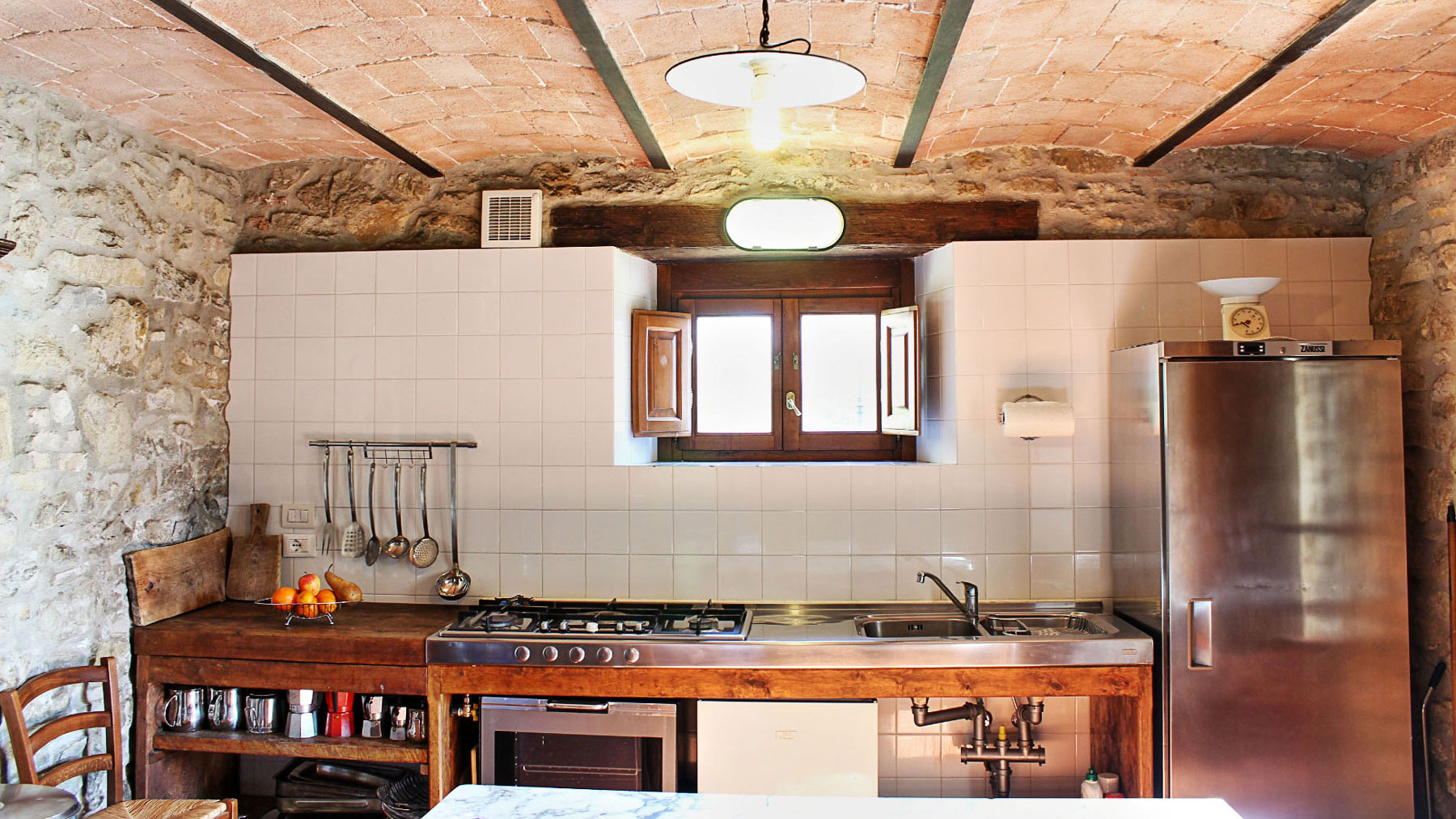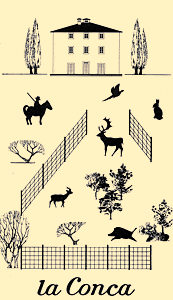The casolari- traditional Tuscan farm-houses- were built around 1500AD, and there are firm historical records of this. “Santarsa“, specifically, was originally an ancient military watch tower, which later evolved into a farm house. A number of remarkable architectural features have been preserved, and are still present today. It takes a dominant position overlooking the whole Tiber Valley. “Vallorsaia“, on the other hand, was originally built as a farm, belonging to the Monastery of the Nuns of Aquitrina, which has now completely disappeared. The four poderi (farms) of ancient origin (La Conca, Santarsa, Vallorsaia and Il Cungi) are typical examples of traditional farming in hill areas. They are characterised by their layout which entails a very low environmental impact: small fields, often terraced or closed off, are distributed across large wooded areas.
The place name Vallorsaia probably derives from its position in a heavily wooded area, rich with game.
The two small chapels, one at Santarsa and one at Il Cungi stand witness to the strong Franciscan influences in this region. As agriculture and industry became more and more mechanised, starting in the fifties, the land was abandoned.
Whilst the abandoning of the poderi created a state of decay in both the buildings and the farmland, it also preserved the original architecture intact, both in the buildings meant for living in and the agricultural ones.
Since 1980 we have been working towards the rescue and rebirth of the farm. We have been conserving and restoring both the buildings and the environment they are part of, in order to preserve and display the historical wealth of these ancient living places and the rare wealth of biological diversity presented by the small cultivated fields spread out, like a mosaic, through the woods.
Today the rural farmhouses built of stone, wood and terracotta, lovingly restored, and equipped with all mod cons allow us to offer our guests an exclusive holiday in an environment of rare beauty only 5km away from the historical centre of Sansepolcro.

